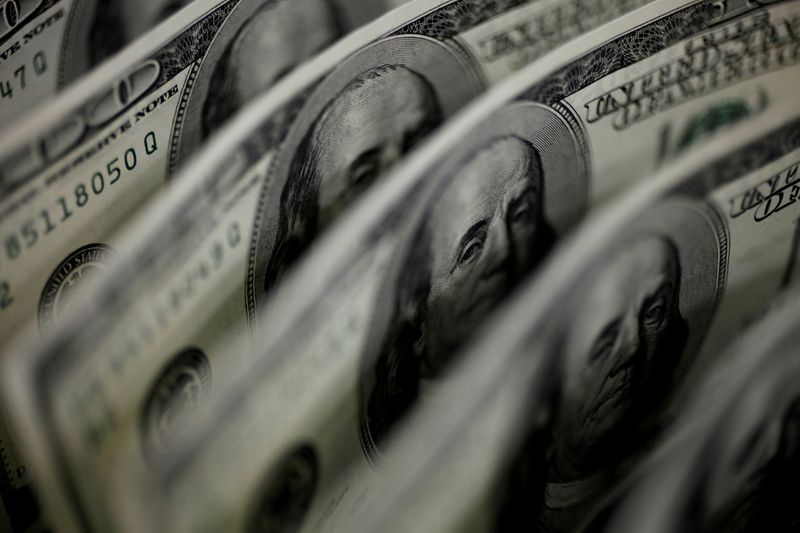By Gertrude Chavez-Dreyfuss
NEW YORK (Reuters) - The dollar hit three-month highs on Thursday but traded within narrow ranges as investors looked to Friday's U.S. nonfarm payrolls report for clues on whether the Federal Reserve will start to reduce monetary stimulus sooner rather than later.
The U.S. dollar index, which measures the greenback against six major counterparts, rose to 92.602 (=USD), the highest since early April. It last traded up 0.2% at 92.572.
The index in June posted its best monthly performance since November 2016, driven in part by the Federal Open Market Committee's unexpected hawkish shift at a meeting during the month. Fed forecasts released after the June FOMC meeting penciled in two interest rate hikes by the end of 2023.
Against the yen, the dollar hit a 15-month high of 111.640 yen, and was last up 0.4% at 111.560.
Increased vaccinations that have led to more robust economic activity have helped the U.S. recovery from the pandemic, prompting expectations the Fed could start exiting its ultra-easy policy. That has provided a lift for the dollar.
"The dollar got a justified boost in June based on physical activity taking place across the country because of inoculations," said Juan Perez, FX strategist and trader at Tempus Inc in Washington.
"The rest of the world simply is not looking that safe, that prepared to move forward," he added
Traders are looking to Friday's U.S. payrolls report for confirmation of the market's bullish outlook. Economists polled by Reuters expect a gain of 700,000 jobs last month, compared with 559,000 in May, and an unemployment rate of 5.7% versus 5.8% in the previous month.
"We generally think the U.S. dollar should stay firm into Friday's U.S. employment reading," said Ned Rumpeltin, European head of FX strategy at TD Securities in a research note.
"We wonder, however, how aggressive further gains could be from there unless the data validates expectations of a further near-term hawkish shift from the Fed."
The greenback extended gains earlier on Thursday after data showed U.S. initial jobless claims fell more than expected last week, while layoffs plunged to a 21-year low in June.
The dollar slipped a bit though after a report showing U.S. manufacturing activity grew at just a moderate pace in June, while employment in the sector contracted for the first time in seven months, likely because of rampant shortages of raw materials and labor.
In afternoon trading, the euro was down 0.1% at $1.1843 after earlier dipping as low as $1.1837 for the first time since April 6. The euro recovered from its lows after data showed euro zone purchasing managers indexes were higher than expected.
The Aussie dollar, seen as a proxy for risk appetite, slid 0.5% to $0.7464, after earlier hitting its lowest since Dec. 21, as Australia's major centers of Sydney, Brisbane, Perth and Darwin are all under lockdown.
